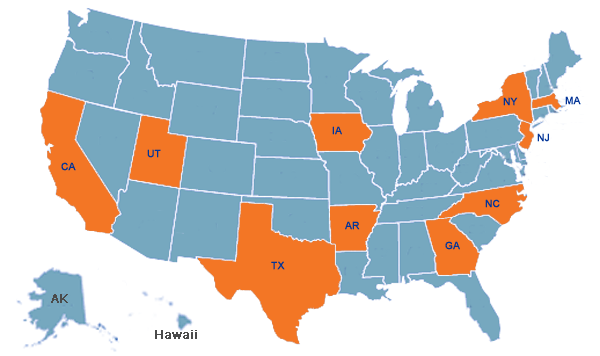National Birth Defects Prevention Study (NBDPS)
 About the Study
About the Study
The NBDPS is one of the largest U.S. studies looking at the risk factors for and potential causes of birth defects.
Results from the NBDPS teach researchers more about what might raise or lower the risk of having a baby with a birth defect. Because of the large number of women participating in the study, we are able to study some less common birth defects for the first time. Understanding the causes of birth defects can help us prevent them. This study provides important clues to help us in our journey to ensure that every child is born with the best health possible.
![]() NBDPS Video
NBDPS Video
Learn about the NBDPS from families who have been affected by birth defects, researchers, and doctors.
Study Components
The study has two parts:
- Interviewing Mothers on the Telephone
Interviewers talk with women who have had a pregnancy or a baby affected by a birth defect, as well as with mothers of babies who have no birth defects. The interviewers ask women about their pregnancy experience and general health.
- Collecting Cheek Cells from Family Members
After the interview, the study researchers send small brushes to each family for collection of cheek cells from the mother, father, and baby. Cheek cells contain genetic material called DNA, which is used to examine the possible role of genes as risk factors for birth defects.
Study Centers
The Centers for Disease Control and Prevention (CDC) coordinates the Centers for Birth Defects Research and Prevention (CBDRP) to collaborate on the National Birth Defects Prevention Study (NBDPS). Participating sites have included Arkansas, California, Georgia (CDC), Iowa, Massachusetts, New Jersey, New York, North Carolina, Texas, and Utah.
Click on the following state abbreviations to get more information on each of the study sites:
AR | CA | GA | IA | MA | NY | NJ | NC | TX | UT

Recent Findings
NBDPS researchers have over 200 project ideas and new topics are being added often. In 2009, 29 papers were published in medical and health journals. The results of some of these papers are discussed below.
- Medication Use During Pregnancy
- Medicine To Ease Morning Sickness and Risk of Birth Defects
- Treatment With Prescription Painkillers (Opioids) and Birth Defects
- Clomiphene Citrate and Birth Defects
- Birth Defects and Acetaminophen Use
- Smoking and Neural Tube Defects
- Genital Tract Infections and Birth Defects
- Caffeine and Selected Birth Defects
Ongoing and Future Research
Through the NBDPS, we have been building the infrastructure for birth defects research for more than a decade. Some of the subjects and activities for ongoing and future research include:
- Medications and pregnancy—Studies are being done of how prescription or over-the-counter medications and dietary or herbal products used during pregnancy affect the risk of birth defects.
- Genetic studies—Genetic risk factors are being identified by looking at the DNA (genetic make-up) of family members affected by a particular birth defect. Researchers also are looking at how genes might interact with a woman’s environment and other factors, such as smoking or diet, about which information is gathered during the interview.
- Environmental studies—In these studies, the NBDPS database is linked with existing environmental databases to find out what environmental substances could be related to birth defects.
- Diabetes and obesity—Studies are being done to assess what factors might modify the effects of diabetes and obesity on the risk of birth defects. For example, we are trying to determine whether any particular physical activities, the type of obesity, or the quality of diet might reduce the risk of birth defects among women who are obese or who have diabetes. Understanding these factors might help us to develop more effective prevention strategies.
- Congenital heart defects—Because of the large size of the NBDPS, we have a unique ability to look at potential relationships between various risk factors and specific types of congenital heart defects.
The ultimate goal of the NBDPS is to share findings that can inform recommendations and programs to prevent birth defects.
For More Information
Information For Study participants »
If you are a researcher with questions about the study, please call 404-498-4315 or e-mail nbdps@cdc.gov.
Contact Us:
- Centers for Disease Control and Prevention
National Center on Birth Defects and Developmental Disabilities
Division of Birth Defects and Developmental Disabilities
1600 Clifton Road
MS E-87
Atlanta, GA 30333 - 800-CDC-INFO
(800-232-4636)
TTY: (888) 232-6348
New Hours of Operation
8am-8pm ET/Monday-Friday
Closed Holidays - cdcinfo@cdc.gov



